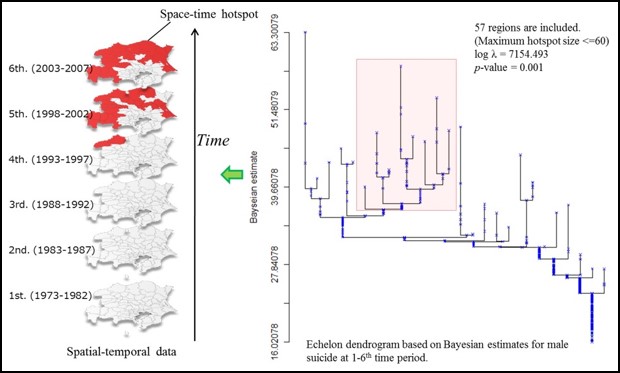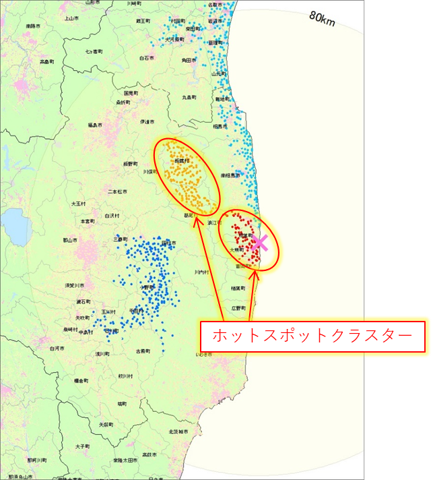Example
Study on hot-spot cluster detection in large-scale spatio-temporal data and its applications
Purposes and overview
One of the concerns in data analysis is to objectively determine whether the subject of interest is concentrated in a certain area (whether a hot-spot cluster exists) based on statistical evidence (data).
The goal of this study is to represent complex and large-scale spatial data, such as multidimensional and multivariate data, in a hierarchical structure using information compression techniques based on topological classification and to establish a method for visually evaluating a hot-spot cluster using that structure. Furthermore, we aim to apply the proposed method to various types of data that have been accumulated in various fields, including epidemiology, criminology and environmental studies.
Expected effects
For example, if we can identify areas where there is an increase in the number of cases of a certain infectious disease, it may become possible to take measures focusing on those areas and detect future effects on health in an early stage. In addition, if we can identify where and when toxic substances that greatly exceed the standard values are emitted, it may become possible to identify the source of the problem and help to clarify the cause of the problem.

Spatio-temporal hot-spot detection based on hierarchical structure of data

Application to radiation dose data
Representative
